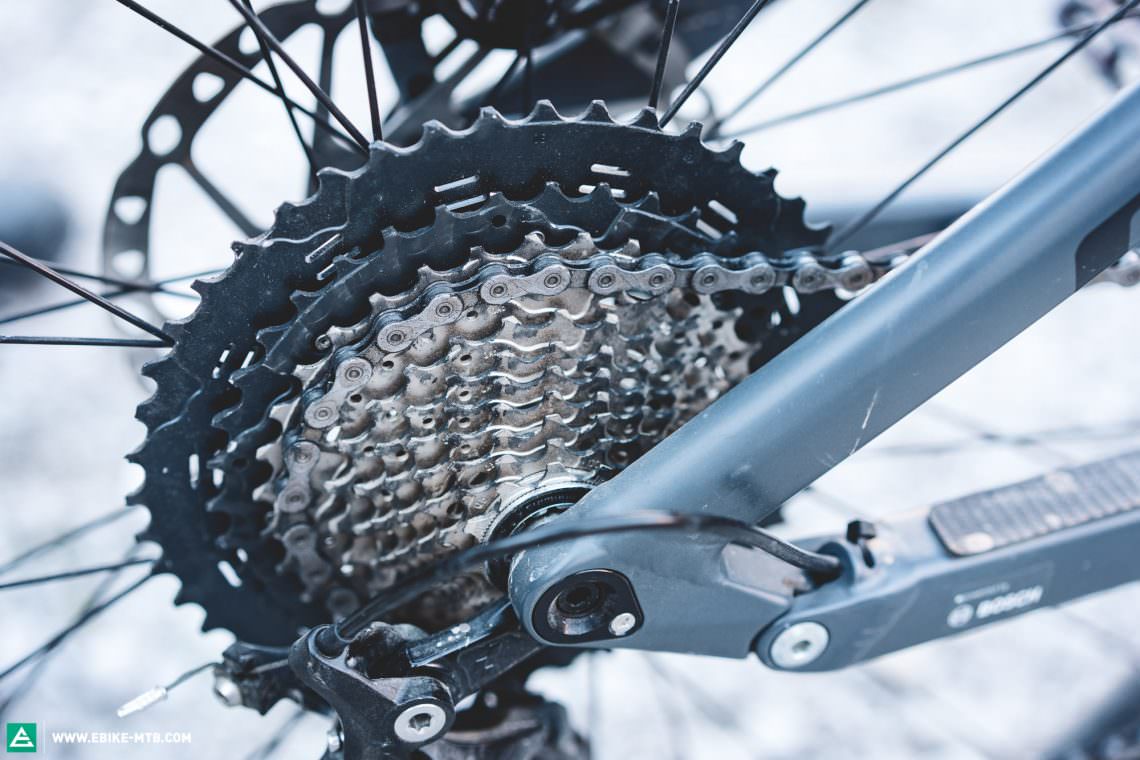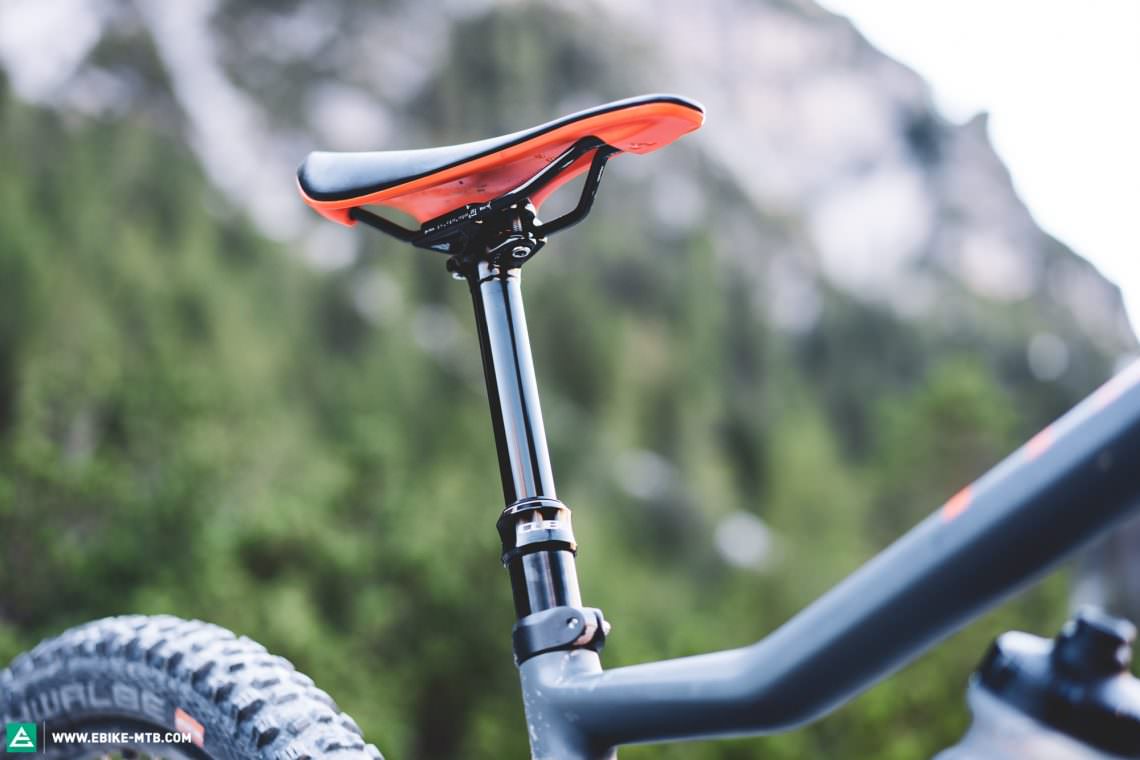Whether you ride your eMTB all-year-round or keep it in the garage while the weather is cold, the last few winter weeks are the perfect time to dial in your bike for the upcoming season! Here we’ll explain what a thorough spring-clean involves and which bits you can sort out by yourself*.
*If you don’t trust your own two hands, number 10 might be your best option. Despite that, we still recommend that you read through all 10 points!

1. Spring cleaning
Before you do anything to your eMTB you should give it a good clean! To get better results we suggest using a bike repair stand and removing both wheels — once these are off you’ll be able to reach the hidden areas on the inside of the chainstays and fork. Use a special bike cleaner or washing-up liquid and a soft sponge to remove the coarser dirt. Fill up a bucket with clear water or use a hose from a distance to rinse the soap thoroughly. If you want to use a high-pressure cleaner make sure you select the lowest pressure setting and keep the nozzle at a reasonable distance to avoid pushing any grit or dirt into bearings.

2. New rubber
Just like your car, your bike’s tires deserve some good care too. If you’re running a tubeless setup, the beginning of the season is the perfect time to top up sealant. Check your tires for wear and tear and possible damage, both on the tread and sidewalls. Even if your old tires are still good, it’s worth considering a fresh set of rubber – this will significantly improve the bike’s performance. Grippy tires such as MAXXIS Minions offer more traction, give you more confidence and are a superb option for the wet transition-season.

3. Don’t screw it up!
Check all nuts and bolts and tighten them to spec using a calibrated torque wrench. You should be able to find bolt torque specifications in your manufacturer’s manual and they are often even printed or etched on the actual component. If you don’t use a torque wrench you could end up over-tightening bolts which can end up being a costly mistake – i.e. if you damage the thread of the brake mount. On critical bolts, you could also apply some Loctite to the thread. Now it’s time to check your bearings – make sure they run smoothly and don’t have any play and do the same with your rear-shock bushings too.

4. Take care of your chain
The chain works a lot harder on eMTBs than it does on conventional bikes. With each revolution of your cranks, the combination of your own power and the motor torque puts the chain under enormous strain. Use a chain-gauge to check the state of your existing chain. If it has stretched you should replace your chain straight away to prevent the chainring and cassette from wearing prematurely. Bear in mind that these parts should be replaced at least once every third chain replacement. Whether the chain on your bike is old or new, you should always lubricate it properly. When you’re done lubricating remember to remove the excess to prevent dirt sticking to it.

4. Check your brakes
A brake-check is an absolute must and crucial for your safety. Examine the thickness of your brake pads and rotors and check them against the manufacturer’s recommendations. If your brake pads need changing you can do this yourself – all major manufacturers offer easy instructions and the procedure doesn’t require special tools. Brake rotors will usually last longer than pads and are very easy to change too. Some bikes with Shimano brakes will require a special Center Lock-tool to remove the rotor from the hub. This small investment should pay itself off within a short time though. If the bite point of your brake doesn’t feel right, it might be time for a bleed. For hobby-mechanics, this is a straightforward procedure and pretty much every major manufacturer offers handy video tutorials you can follow step by step. If you’re still not a 100% sure, take your bike to your trusted LBS and let them do it for you.

5. Give your suspension some love
Unlike car suspension, mountain bike forks and shocks need to be serviced regularly. Before you get started, make sure you take note of all of your personal settings. That will allow for a quick, straightforward setup after maintenance. Service intervals can vary considerably. Having said that you should service your spring elements at least once every season to ensure optimum function and good durability. You can easily carry out the small service yourself but we recommend sending your fork or shock to a certified dealer or manufacturer for more complex work.

6. Do an update: eMTB 2.0
If you’ve been using your eMTB for a while you should check which software version your motor is currently running on. Most major motor manufacturers have released at least one update over the past year – some of these updates give you access to completely new modes and functions. The update is worth doing especially if you own a Bosch CX motor, as this allows you to enjoy the perks of the new eMTB mode. Most systems can only be updated by an official dealer but with Shimano motors, you can easily update the system at home via the E-TUBE App.

8. Shift faster
Most eMTBs come with a mechanical, cable-operated rear-derailleur. A new shift cable and housing cost just a few euros and can significantly improve the overall shifting performance of your bike. The complexity of this replacement varies depending on how straightforward the cable-routing on your bike is and whether this runs inside or outside the frame. However, with a little patience, you should be able to do this yourself. Bear in mind that a new cable will take a little while to bed-in properly and you’ll have to readjust the cable tension a few times on the first few rides. If you don’t know how to adjust the gears properly take the bike to your LBS or ask a friend to help you out!

9. Take care of your dropper-post
Most modern eMTBs come with a dropper post which is operated either mechanically (cable) or hydraulically. If your dropper is mechanically-operated you can replace the cable and housing just as you do with the gear cable. A hydraulic circuit can be bled in case the dropper stops working as it should. On some models, you can bleed the actual post, whilst with others, there are mechanical components involved. Please follow your manufacturer’s instructions and tutorials.

10. Watch a pro at work
If you don’t feel like doing maintenance yourself, you can always ask your trusted LBS to do it for you. If you decide to get your bike serviced at your LBS we recommend doing this during the winter months when workshops are generally much quieter. This way you’ll avoid endless waiting times and unwanted stress. But if you’re taking your bike to the workshop just to save yourself time, we think you should try to make an effort to find the time to do it yourself. Knowing how to service your bike earns you respect amongst your riding buddies and allows you to help them with trail-side breakdowns. Sometimes it can be just as much fun as riding bikes and it’s not that hard either! “Trial and error” is the way to go, but by following all of the manufacturer’s instructions and tutorials you can keep error reasonably low. By the way, some shops also offer their customers evening courses where you learn the basics of mechanics from a pro.
This article is from E-MOUNTAINBIKE issue #016
E-MOUNTAINBIKE Magazine is published in a digital app format in both English and German. Download the app for iOS or Android to read all articles on your tablet or smartphone. 100% free!

Did you enjoy this article? If so, we would be stoked if you decide to support us with a monthly contribution. By becoming a supporter of E-MOUNTAINBIKE, you will help secure a sustainable future for high-quality cycling journalism. Click here to learn more.
Words: Photos: diverse











